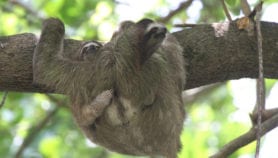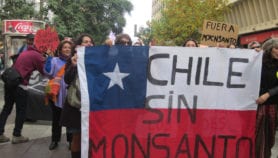Send to a friend
The details you provide on this page will not be used to send unsolicited email, and will not be sold to a 3rd party. See privacy policy.
The proposed international regime to tackle ‘biopiracy’ — the International Regime on Access and Benefit-Sharing that is due to be agreed as part of the Convention on Biological Diversity in Nagoyo, Japan next week — must avoid stifling cross-border movement of useful, non-commercial living organisms, argues Matthew Cock, chief scientist at CABI.
Biological control — controlling pests using their natural enemies — can require the movement of living organisms across national borders. But the agreement may hinder this freedom, argues Cock, writing in the journal Nature.
There are more than 7,000 examples of the successful use of biological control in 145 countries, and dozens of these cases, such as the introduction of the South American wasp to Africa in the 1970s to prey on the cassava mealy bug, are in the poorest countries in the world, says Cock.
The new rules are intended to ensure that manufacturing companies share their profits with the nations from which their material originates. But biological control does not work with a monetary-based agreement as the benefits of biological control accrue to all, not to the implementing agency or government says Cock.
The proposed regime’s bureaucracy threatens to impede simple surveys for potential biological control agents and prevent samples being taken out of host countries and introduced into others, argues Cock.
He suggests that governments waive rights to genetic resources being used to improve agriculture or protect the environment, that non-monetary ways of sharing such benefits should be created, and that administrative procedures such as informed consent and access permission should be made straightforward and rapid.
More on Bioprospecting
News
Combining cassava species could lead to better crops
[SAO PAULO] Combining tissues from different cassava species may lead to a new method for improving t ...16/10/12
News
Biodiversity data gaps ‘need bridging’ to meet global targets
[HYDERABAD] Global biodiversit ...11/10/12
News
Meeting puts socioeconomic impact on biosafety agenda
[HYDERABAD] An international treaty meeting on biosafety has recommended to include the socioeconomic ...09/10/12
Feature
Guide and glossary to CBD
The Convention on Biological Diversity (CBD) has spawned a series of agreements and technical ...07/10/12








